Medicare Part D Prescription Drug Coverage
Request a Medicare Part D Rx Quote, Compare Your Options, and Save on Your Prescription Drugs!
What is Medicare Part D?
Part D is Medicare’s prescription drug benefit. This is an optional federal program that subsidizes the cost of prescription drugs, and can save beneficiaries thousands on the cost of recurring medications.
With a Part D plan, Medicare beneficiaries can pay monthly premiums in exchange for their recurring monthly prescriptions. The benefits are administered by private insurance companies, and then reimbursed by Centers for Medicare and Medicaid Services (CMS).
Part D plans only cover generic and name-brand prescriptions. No other benefits are provided with a Part D plan.

Reviewed by Lou Spatafore
Fact checked by Leslie Jablonski
Which drugs are covered under Medicare Part D?
The specific list of prescription drugs covered by your Part D plan (known as the formulary) will vary depending on both the provider and plan options. However, all plan formularies are required to include coverage for protected class medications.
There are six protected class medications that all Part D plans must include coverage for:
-
- Antidepressants
- Antipsychotics
- Anticonvulsants
- Immunosuppressants
- Antiretrovirals
- Antineoplastics (except in limited circumstances)
Beyond these protected medications, each insurance company has its own list of what is covered. Your advisor can help you find a plan that covers most or all of your recurring monthly prescriptions.
How do I enroll in Medicare Part D?
There are two options for obtaining a Medicare Part D plan:
- PDP only: This option is for a stand-alone Part D plan (PDP) designed to work in conjunction with your original Medicare.
- Medicare Advantage (MA): Switching to a Medicare Advantage plan can get you all the drug coverage of Part D, in addition to coverage for medical services. These supplemental plans are designed to cover the things that Original Medicare does not.
Medicare Advantage plans are available through a number of different companies and include numerous plan options. Before enrolling in an MA plan, work with your advisor to choose the one with the best options.
How much does Medicare Part D cost?
Like other healthcare plans, the cost of Part D premiums, deductibles, and copayments can change from year to year. In addition, your premium will vary depending on which plan you choose, your location, and your income.
For some low-income Medicare enrollees, the Extra Help program can provide a subsidy that pays for a portion of your Part D premium. Find out if you qualify for Extra Help.
Part D cost breakdown: 2024
| Standard | With Partial Extra Help | With Full Extra Help | |
|---|---|---|---|
| Average monthly premium | $55.50 | $10 – $30 | $0 |
| Annual deductible limit | $545 | $92 | $0 |
| Copay (after deductible) | 25% | 15% | $4.15 generic / $10.35 name brand |
| Initial coverage limit | $5030 | $5030 | $5030 |
| Out-of-pocket threshold | $8000 | $8000 | $8000 |
| Copay (after OOP threshold) | $4.15 generic / $10.35 name brand | $4.15 generic / $10.35 name brand | $0 |
Medicare Part D 2024 cost:
Average monthly premium
For 2024, the average cost of a PDP premium is expected to be around $55.5 / month.
It is possible that your own premium could be significantly lower depending on which plan options you choose.
Annual deductible
The annual deductible in 2024 will be capped at $545. For beneficiaries who are eligible for the Extra Help program, the annual deductible can be as low as $89, or even $0.
Copayment / Coinsurance (coverage phase)
After the deductible is met, the beneficiary will pay 25% of all covered costs up to the initial coverage limit. This is different from previous years, when generic and name-brand prescriptions had different copay amounts.
Beneficiaries who qualify for partial Extra Help will pay a reduced copayment of 15%, while full Extra Help beneficiaries can pay as little as $0.
Initial coverage limit
The initial coverage limit (ICL) is the total retail value of prescription drugs you can purchase before entering your plans coverage phase. Once you hit your ICL and enter the coverage phase, you will receive a fixed 75% discount on all formulary drugs.
Because most Part D plans use the standard cost sharing rate of 25%, the coverage phase might not change the amount that you are paying for medications. In fact, some prescription costs might even go up.
The initial coverage limit in 2024 is $5030. Most PDPs accept this number as the standard, but some plans can be lower.
Out-of-pocket threshold
When a Part D beneficiary reaches their out-of-pocket threshold, they enter the catastrophic phase of coverage. This reduces medication costs to a low fixed copay.
In 2024, the Part D out-of-pocket threshold is $8,000.
Copayments / Coinsurance (catastrophic phase)
After a beneficiary reaches their out-of-pocket maximum, the costs of covered medications drop to per-prescription copays.
In this phase, generic medications with a retail price of $74 and under are $3.95. If the retail price is above $74, the medication will cost the beneficiary 5% of the total price.
Name-brand drugs with a retail price of $184 and under will cost the beneficiary $9.85. If the retail price is above $184, the beneficiary will pay 5% of the total price.
Beneficiaries that qualify for a full Extra Help benefit will pay $0 for medications once their catastrophic coverage phase has begun. This is also true of beneficiaries who earn less than the National Poverty Level.
Paying your Medicare Part D monthly premiums
When paying the monthly premium, you have the option to have the payment automatically deducted from your Social Security check. The insurance company you choose can arrange this payment method. You can also choose to have the premiums automatically deducted from a checking account, or pay through the mail.
When to Sign-up for Medicare Part D Coverage – Enrollment Periods
You can enroll for Part D Prescription Drug Coverage when you become eligible at age 65, or during the open enrollment period.
1. Annual Enrollment Election Period
The Annual Enrollment Election Period runs from October 15 through December 7 of every year. During this time, you may enroll in or change Medicare Prescription Drug Plans under the following qualifications:
-
- You are entitled to Medicare Part A or are enrolled in Part B.
- Your permanent residence is within the United States. You must continue to pay your Medicare Part B Premium, if not otherwise paid for under Medicaid or by another third party.
- You are not enrolled or do not plan to stay enrolled in another Medicare Prescription Drug Plan.
- You may enroll in only one Medicare Prescription Drug Plan at a time and may not be enrolled in a Medicare Advantage Plan at the same time. If you choose a Medicare Advantage Plan, your prescription drug coverage is included.
If you currently have a Medicare Supplement plan, you can also switch to a different plan during the Annual Enrollment Election Period
2. Initial Enrollment Period
The Initial Enrollment Period is a seven-month period that includes the month during which you first become eligible (at age 65 or earlier if you qualify due to a disability or end-stage renal disease) plus the three months before and the three months after the month in which you become eligible.
If you do not enroll during your seven-month Initial Enrollment period, you will have an opportunity to join a prescription drug plan every year from October 15 through December.
However, if you enroll after the Initial Period you will be assessed a late enrollment penalty.
The late penalty is currently 1% of the national average monthly premium for each month you were eligible but were not enrolled in a Medicare Prescription Drug Plan. The penalty will be added to your premium for as long as you are enrolled in Medicare’s prescription drug coverage.
You can delay enrollment in Medicare’s prescription drug coverage without paying a penalty if you have prior creditable coverage on an individual policy or through an employer group policy. Creditable coverage means you have a drug benefit that equals (or is better than) Medicare’s standard prescription drug coverage.
3. Special Enrollment Period
A Special Enrollment Period is available in certain situations, such as if you become disabled or move outside of the service area your plan provides. In these cases, you may enroll in or change Medicare Prescription Drug Plans at any time.
Save Money on Your Prescriptions
Since there is a late-enrollment penalty for delaying the purchase of a PDP, you may benefit from signing up for a Part D plan even if you are not currently on any medications. In this way, you can choose the least expensive plan in order to avoid the penalty, with the option of switching to a more comprehensive plan if your needs change.
Compare Quotes on the Best Rated Medicare Part D Plans
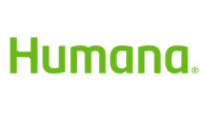

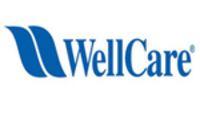
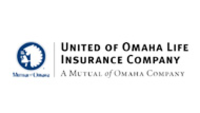
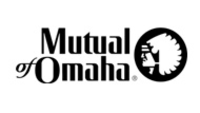

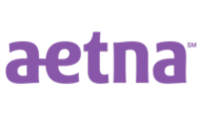
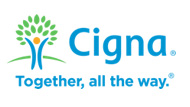

If you are not comfortable with the online quote process, or if you have any other questions, please contact one of our MediGap Personal Benefits Manager at 800-913-3416. You may also e-mail us at info@MediGapAdvisors.com, or schedule a free consultation. Remember that our services are offered to you with zero cost and with no obligation. Our goal at MediGap Advisors is simply to help you understand your Medicare Part D Prescription Drug Plan and help you make informed decisions regarding your coverage.
Where To Go From Here:
We do not offer every plan available in your area. Any information we provide is limited to those plans we do offer in your area. Please contact Medicare.gov or 1-800-MEDICARE (TTY users should call 1-877-486-2048) 24 hours a day/7 days a week to get information on all of your options.

